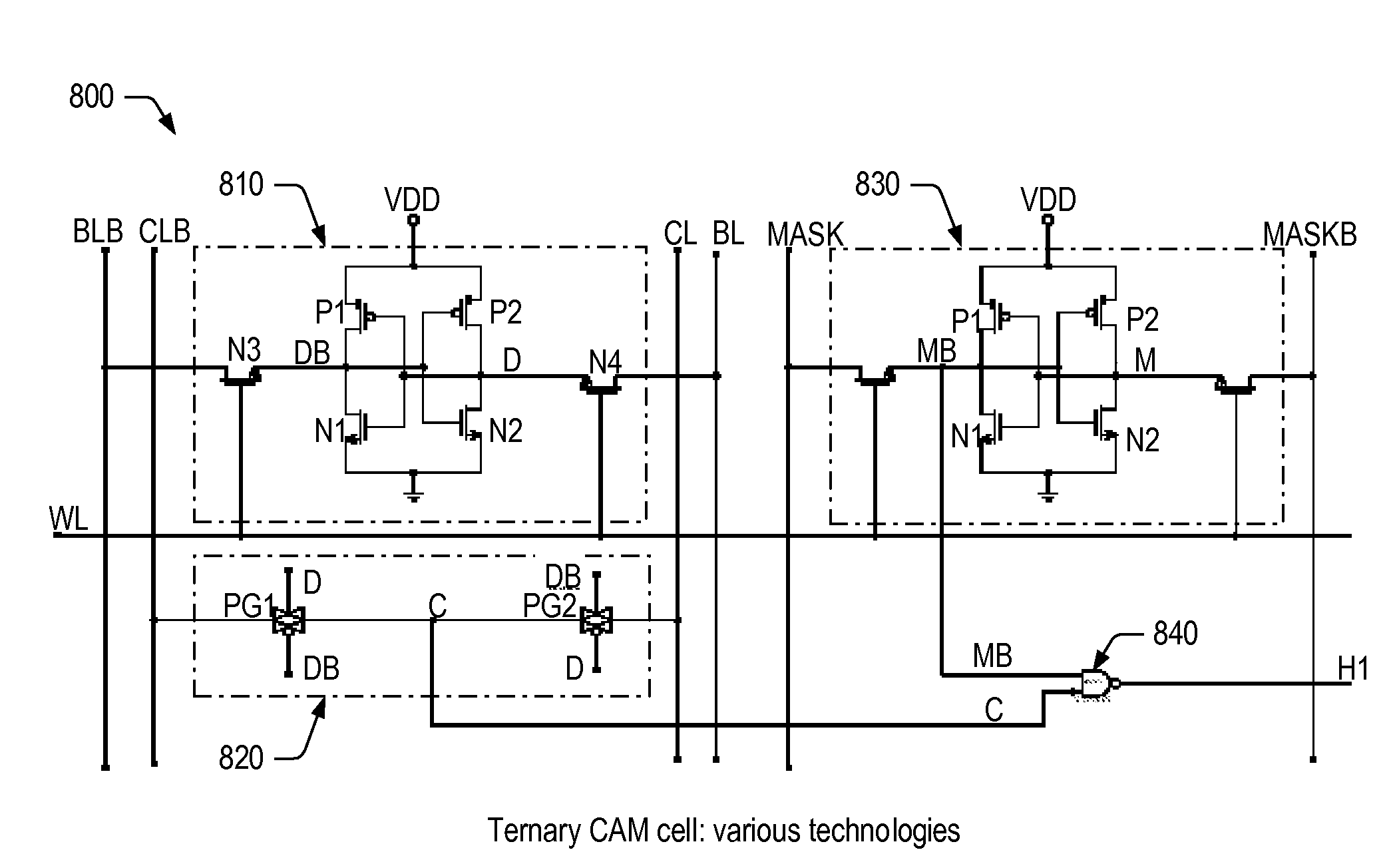Content addressable memory (CAM) architecture and method of operating the same
a technology of addressable memory and content, applied in the field of content addressable memory (cam), can solve the problems of not being fully turned, detecting transistors, and reducing transistor sizes
- Summary
- Abstract
- Description
- Claims
- Application Information
AI Technical Summary
Benefits of technology
Problems solved by technology
Method used
Image
Examples
Embodiment Construction
[0049]An improved CAM cell architecture and method for operating the same will now be described in reference to FIGS. 7-12. As described in more detail below, the improved architecture and method reduces power consumption and peak current, improves timing and decreases the complexity of the CAM device, as compared to conventional techniques. The improved architecture can also be implemented using a variety of technologies (including those 90 nm and below) without suffering the functional failures that typically occur in conventional designs.
[0050]FIGS. 7-8 illustrate exemplary binary and ternary CAM cell architectures, in accordance with one embodiment of the invention. As shown in FIG. 7, binary CAM cell 700 generally includes storage logic 710, comparison logic 720, a word line (WL), a match line (ML), a pair of complementary bit lines (BL / BLB) and a pair of complementary compare lines (CL / CLB). Like storage logic 210 and 310 of FIGS. 2 and 3, storage logic 710 includes a storage ...
PUM
 Login to View More
Login to View More Abstract
Description
Claims
Application Information
 Login to View More
Login to View More - Generate Ideas
- Intellectual Property
- Life Sciences
- Materials
- Tech Scout
- Unparalleled Data Quality
- Higher Quality Content
- 60% Fewer Hallucinations
Browse by: Latest US Patents, China's latest patents, Technical Efficacy Thesaurus, Application Domain, Technology Topic, Popular Technical Reports.
© 2025 PatSnap. All rights reserved.Legal|Privacy policy|Modern Slavery Act Transparency Statement|Sitemap|About US| Contact US: help@patsnap.com



